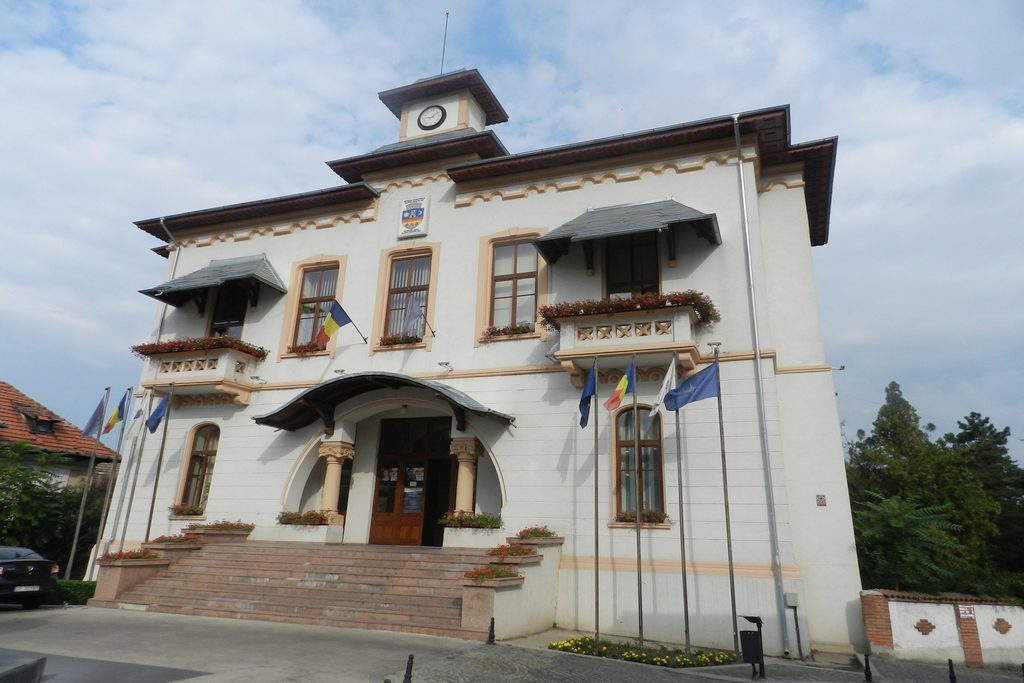

Slatina’s City Hall carries out its activity in a building with historical significance that was rehabilitated in 2012, based on local budget and European funds.
Archaeological investigations have shown the existence of a human settlement on the old hearth of the city Slatina, belonging to the culture of rubble. Recent research findings are relevant consisting of ceramic remains of the culture of Coţofeni and Vădastra.
At the same time, the area was inhabited by the Geto-Dacian branch Acilor, resided at Acidava on the right bank of the river Olt on the Limesul Alutan. In the Slatina Municipality were discovered iron agricultural tools, Roman luxury ceramics (terra sigillata) and common, coin thesauri.
Two Roman settlements were identified in Slatina, in Strehareţi and in Cireasov. The material attestation of the inhabitation of this area is weaker for the centuries IV-VII AD, but for the centuries VIII-XIII there are evidence of habitation, some belonging to Dridu Culture and Vădastra and others bearing traces of the migrations of Pecengi, Cumans and Tatars.
Slatina was first documentary attested in medieval times, on 20 January 1368 in an official document: Vladislav I Vlaicu (1364-1377) granted customs exemptions in Slatina to all merchants from Brasov.
In June 1522, in Slatina, Radu of Afumaţi defeated the Ottoman Turks.
During the reign of Vlad Vintilă (1532-1535) is issued a note mentioning the fortress of Slatina. Michael the Brave initiated efforts to restore the Clocociov Monastery in Slatina as a reward for the services offered by the population in his political campaigns.
In the modern era Slatina survived the Revolution of 1821. Here, Tudor met with the leader of the outlaws, Iancu Jianu.
This political moment established in the area the Tudor architectural style.
Citizens of Slatina were actively involved in the political events that followed: the Revolution of 1848, The Unification of Moldavia with the Country of Romanian on 24 January 1859, the War of Independence in 1877, the Peasant Revolt of 1907, the Union of the Principalities of 1918, the First and Second World War.
There are divided opinions about the origin of the name of the town. A first version suggests that the name Slatina is of Slavic origin, derived from the words “slam” (earth) and “tina” (salty); thus the name would translate as “salt land”, “salter food”, “salt water”, referring to the river Olt. This hypothesis appears to be motivated by the Slavic toponymy of some areas within the city and of surroundings, as well as some nearby localities (Obrocari – today Tudor Vladimirescu Street, Hill Grădiştea, Clocociov, Dobrotinet, Milcov, Brebeni, Sopot, Teslui etc.). Also in favor of this hypothesis come the records of historian A.D. Xenopol, who speaks about the Slavs as migratory population.
A second hypothesis claims that the city’s name comes from the archaic Latin “Salaatina”, “Salatina”, “Slatina” – thus resulting that the city of Slatina bears the name of the Roman colony that once was installed here.
